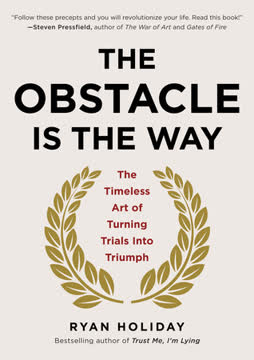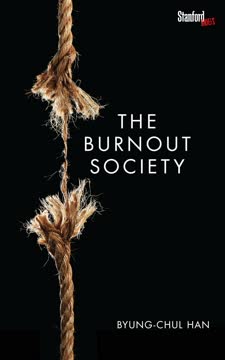Key Takeaways
1. Tao: The Ineffable Unity Underlying All Existence
The tao that can be told is not the eternal Tao. The name that can be named is not the eternal Name.
The Tao is beyond words. It represents the fundamental unity and principle underlying all existence, which cannot be adequately described or defined using language. The Tao is experienced rather than intellectually understood, and it encompasses the entirety of reality in its ever-changing, interconnected nature.
- Tao literally means "the way" or "the path"
- It refers to both the way of nature and one's own true nature
- The Tao is paradoxical: empty yet full, weak yet strong
- It cannot be grasped intellectually, only experienced directly
2. Wu Wei: The Art of Non-Forcing and Effortless Action
Nothing in the world is weaker than water, but it has no better in overcoming the hard.
Wu Wei is effortless action. This principle encourages alignment with the natural flow of events rather than forcing outcomes. By understanding and working with the inherent patterns of nature and situations, one can achieve more with less effort.
- Wu Wei literally means "non-doing" or "non-action"
- It involves acting in harmony with the natural course of things
Examples include:- Flowing like water around obstacles
- Splitting wood along its grain
- Sailing with the wind rather than against it
- Wu Wei leads to greater effectiveness and reduced struggle
3. Yin and Yang: The Interplay of Opposites in Nature
Being and non-being create each other. Difficult and easy support each other. Long and short define each other. High and low depend on each other. Before and after follow each other.
Opposites are interdependent. The Taoist worldview recognizes that all apparent opposites are actually complementary and mutually defining aspects of a greater whole. This perspective encourages a holistic understanding of reality and the embrace of apparent contradictions.
- Yin and Yang represent the interplay of opposites in nature
Examples of complementary pairs:- Light and dark
- Male and female
- Action and rest
- Strength and weakness
- Understanding this principle leads to balance and harmony in life
4. Te: Virtue as Skill in Living
The superior kind of virtue is not conscious of itself as virtue, and thus really is virtue. But the inferior kind of virtue is so anxious to be virtuous that it loses its virtue altogether.
Te is effortless virtue. In Taoism, virtue is not a matter of following moral rules, but rather a kind of skillful living that arises naturally from alignment with the Tao. True virtue is spontaneous and unself-conscious, rather than forced or contrived.
- Te can be translated as "virtue," "power," or "integrity"
- It represents the manifestation of the Tao in individual beings
Characteristics of Te:- Naturalness and spontaneity
- Absence of self-consciousness or striving
- Effortless effectiveness in action
- Cultivating Te involves letting go of artificiality and pretense
5. Li: The Organic Pattern of Nature Beyond Words
The order of nature, the order of justice, and the order of beauty are things that we can know in ourselves, yet we cannot write down in black and white.
Li is nature's organic pattern. This concept refers to the inherent, complex patterns found in nature that cannot be fully captured or described by words or linear thinking. Understanding li involves developing a sensitivity to these organic patterns and learning to work with them.
- Li originally referred to the grain in wood or markings in jade
- It represents the intricate, interconnected patterns in nature
Examples of li:- The branching of trees
- The flow of water in a stream
- The structure of a snowflake
- Appreciating li leads to a more intuitive understanding of the world
6. Tzu-Jan: The Spontaneous Self-So of Nature
Everything is said to have its own Tao, but it is impossible to define it, to put one's finger on it exactly.
Tzu-Jan is nature's spontaneity. This principle recognizes that nature operates spontaneously, without external force or conscious effort. By understanding and aligning with this spontaneous self-organization, one can live more harmoniously and effectively.
- Tzu-Jan literally means "self-so" or "of itself"
- It refers to the natural, spontaneous functioning of things
Examples of Tzu-Jan:- The growth of plants
- The beating of the heart
- The formation of clouds
- Cultivating Tzu-Jan involves trusting in natural processes
7. Balance: The Fundamental Principle of Taoist Philosophy
If you cannot trust your own nature, how can you trust your own mistrusting of it?
Balance is key in Taoism. This philosophy emphasizes the importance of maintaining equilibrium in all aspects of life. By recognizing the interconnectedness of opposites and avoiding extremes, one can achieve greater harmony and effectiveness.
- Balance is seen as the natural state of the universe
It applies to various aspects of life:- Work and rest
- Action and non-action
- Strength and flexibility
Maintaining balance involves: - Recognizing when to act and when to refrain
- Adapting to changing circumstances
- Avoiding attachment to extremes
8. The I Ching: Ancient Wisdom for Modern Decision-Making
True quiet means keeping still when the time has come to keep still, and going forward when the time has come to go forward. In this way rest and movement are in agreement with the demands of the time, and thus there is light in life.
The I Ching offers timeless guidance. This ancient Chinese divination system provides a method for gaining insight into complex situations by tapping into the underlying patterns of change in the universe. While seemingly based on chance, it encourages a holistic perspective on decision-making.
- The I Ching, or "Book of Changes," dates back over 3,000 years
- It uses 64 hexagrams to represent all possible situations in life
Consulting the I Ching involves:- Formulating a clear question
- Generating a hexagram through coin tosses or yarrow stalks
- Interpreting the resulting hexagram and its changing lines
- The I Ching encourages reflection on the present moment and its context
9. Judo: The Gentle Way of Using an Opponent's Strength
Instead of defending myself, and pushing the blow off, the idea in judo is to carry the blow away.
Judo embodies Taoist principles. This martial art, whose name means "the gentle way," demonstrates the practical application of Taoist ideas such as wu wei and the use of softness to overcome hardness. By yielding and redirecting force, one can achieve victory with minimal effort.
Judo principles align with Taoist philosophy:
- Using an opponent's strength against them
- Maintaining balance and flexibility
- Acting with minimal force for maximum effect
Applications extend beyond martial arts to daily life: - Resolving conflicts through non-resistance
- Adapting to challenges rather than fighting them directly
- Achieving goals through alignment with natural forces
10. The Limitations of Rational Thought and Language
Our confusion of the order of logic and of words with the order of nature is what makes everything seem so problematic to us.
Words cannot fully capture reality. Taoism recognizes the inherent limitations of language and rational thought in understanding the complex, interconnected nature of reality. This insight encourages a more intuitive, experiential approach to wisdom.
Limitations of language and rational thought:
- Tendency to create artificial divisions in reality
- Inability to capture the full complexity of natural patterns
- Potential to lead to rigid, dogmatic thinking
Taoist approach to knowledge: - Emphasizes direct experience over intellectual understanding
- Encourages intuitive wisdom and "knowing without knowing"
- Recognizes the value of paradox and contradiction
Practical implications: - Cultivating openness to multiple perspectives
- Balancing analytical thinking with intuitive understanding
- Recognizing the limits of our ability to fully comprehend reality
Last updated:
Review Summary
What Is Tao? receives generally positive reviews, with readers praising Alan Watts' clear and concise explanation of complex Taoist concepts. Many appreciate the book's brevity and accessibility, finding it an excellent introduction to Taoism. Watts' poetic prose and use of analogies are frequently highlighted. Some readers note that the book's shortness leaves them wanting more depth, while others find it perfectly succinct. Many reviewers express that the book has influenced their personal philosophy and approach to life, often describing it as mind-opening and transformative.
Similar Books









Download PDF
Download EPUB
.epub digital book format is ideal for reading ebooks on phones, tablets, and e-readers.













